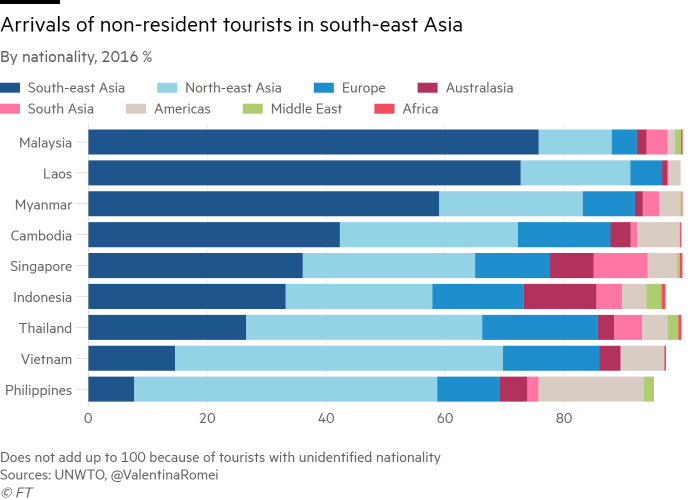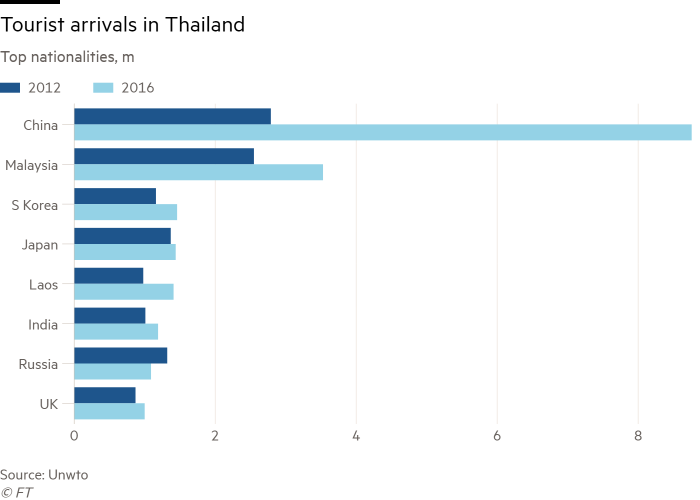According to Financial Times (FT), Japan is region’s biggest investor but data show Beijing’s influence is growing fast.
Recent data compiled and showed in a news article dated May 1 recently, FT research on data for trade, foreign direct investment and tourism in ASEAN countries has found that, while China’s expanding influence is undeniable, Japan, South Korea, and other countries remain important players — and the region’s countries still mostly trade with one another.
Highlights from the report of who is dominating the region's economies are listed below:
1. Japan is the main investor in south-east Asia
Japan remains the dominant foreign investor in south-east Asia. About 20 per cent of capital invested in the region in so-called greenfield projects — those that are being built from the ground up — in the past seven years originated from Japan, up 6 percentage points from 14 per cent in the seven years to 2010.

Chinese FDI in south-east Asia is growing faster, but only just, at nearly 7 percentage points over the same period, to a total of 14 per cent of capital invested in the region.
“Because of rising labour costs in China, companies are moving labour-intensive assembly operations to Asian countries,” says Juzhong Zhuang, deputy chief economist with the Asian Development Bank.
One example, he says, is Cambodia’s large garment industry, where Chinese companies are major investors.
Richer countries — including Thailand and Malaysia — show the highest rates of FDI from outside ASEAN; in Thailand, for example, over 50 per cent of capital invested came from Japan and the US (see chart below).
China has invested more than Japan and the US in the region’s poorer economies, but its contribution was still dwarfed by the collective investment of the other countries in the region.

2. ASEAN countries mostly trade with each other
Trade is the area where China’s rising influence is easiest to spot. In 2000, China was a less significant source of imports into south-east Asia than either Japan, the US, or the EU.
Now it accounts for about 20 per cent of the value of all goods imported in the region, up from 5 per cent in 2000, making it the region’s biggest and fastest-growing single source of imports.
The value of the goods China exports to ASEAN is more than double that of Japan.

3. Chinese tourism is rising fast
Tourism is another sector where China’s growing importance to the region can be tracked — particularly in Thailand and Vietnam in which tourism is a significant contributor to GDP.

The region has seen a surge in demand from upwardly mobile Chinese, who are served by a growing number of flights: AirAsia, the budget carrier, operates 274 weekly one-way flights between mainland China and ASEAN cities, up from 197 in 2013, according to AirAsia.
Chinese tourist arrivals in Thailand accounted for 27 per cent of the 33m tourists who arrived in the kingdom in 2016 — over three times the number that visited the country in 2012, and the fastest increase in visitors registered by any nationality.

For China sceptics — the people who see only downside in the country’s growing influence — the tourism surge is potentially ominous, as Beijing could tell tourists to stay away in the event of a political crisis, potentially using the industry as an economic weapon, as happened in 2012 when some groups cancelled tours to the Philippines amid a flaring of tension over the South China Sea.
But tourists from within ASEAN remain a force to be reckoned with, outnumbering Chinese visitors in Malaysia, Laos and Myanmar.
Source : https://www.ft.com/content/898fa38e-4882-11e8-8ee8-cae73aab7ccb


















